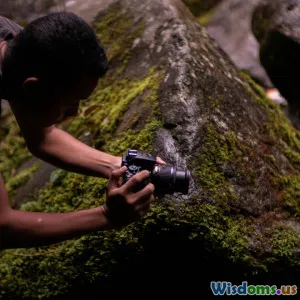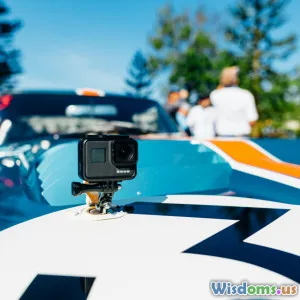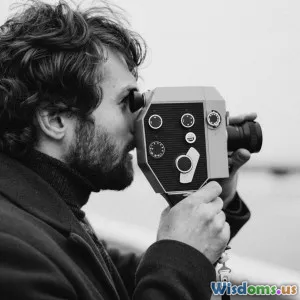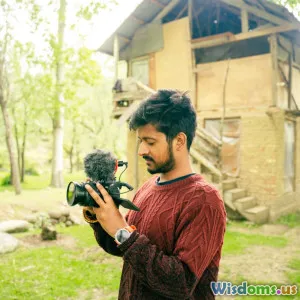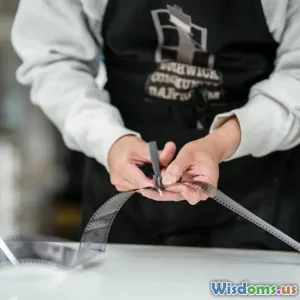
Innovative Techniques in Documentary Filmmaking
6 min read Explore cutting-edge techniques transforming documentary filmmaking, from immersive storytelling to innovative technologies. (0 Reviews)
Innovative Techniques in Documentary Filmmaking
Documentary filmmaking has evolved significantly over the years, driven by advancements in technology and a deeper understanding of storytelling. In an era where audiences are inundated with content, innovative techniques in documentary filmmaking are crucial for capturing attention and conveying compelling narratives. This article explores some of the most groundbreaking techniques that are redefining the landscape of documentary filmmaking.
1. Immersive Storytelling
Virtual Reality (VR) and Augmented Reality (AR)
One of the most exciting innovations in documentary filmmaking is the use of Virtual Reality (VR) and Augmented Reality (AR). These technologies allow filmmakers to create immersive experiences that transport viewers into the heart of the story. For instance, projects like “The 360-Degree Documentary” enable audiences to explore environments and interact with characters as if they are part of the narrative. This level of immersion not only enhances engagement but also fosters a deeper emotional connection with the subject matter.
Interactive Documentaries
Interactive documentaries, such as “Bear 71”, encourage viewers to make choices that affect the storytelling experience. This technique empowers audiences to engage actively with the content, making them feel like participants rather than passive observers. By allowing viewers to explore different storylines or angles, filmmakers can present complex narratives in a more nuanced way.
2. Innovative Filming Techniques
Drones and Aerial Cinematography
The use of drones in documentary filmmaking has revolutionized aerial cinematography, providing filmmakers with stunning visuals that were once difficult or impossible to achieve. Drone technology allows for dynamic shots that capture expansive landscapes or intricate details from above, adding a new dimension to storytelling. Documentaries like “Our Planet” utilize drone footage to showcase the beauty of nature, highlighting environmental issues in a visually compelling manner.
Time-Lapse and Hyperlapse Techniques
Time-lapse and hyperlapse techniques can compress hours or days into seconds, effectively illustrating changes over time. These techniques are particularly useful in documentaries focusing on nature, urban development, or social issues. For example, the documentary “Baraka” uses time-lapse sequences to depict the passage of time and the impact of humanity on the planet.
3. Enhanced Audio Techniques
3D Audio and Spatial Sound
Sound is a powerful tool in storytelling, and advancements in audio technology are enabling filmmakers to create more immersive soundscapes. Techniques like 3D audio and spatial sound allow audiences to experience sound as if they are present in the environment. Documentaries like “The Dawn Wall” utilize advanced sound techniques to enhance the emotional resonance of the narrative, making viewers feel the tension and triumph of the climbers.
Oral Histories and Sound Design
Incorporating oral histories and thoughtfully crafted sound design can enrich the documentary experience. By layering personal testimonies with ambient sounds and music, filmmakers can create a rich tapestry that enhances the narrative. This technique is exemplified in films like “13th”, where the combination of interviews and evocative sound design deepens the impact of the subject matter.
4. Data Visualization
Infographics and Animated Visuals
With the rise of data journalism, documentary filmmakers are increasingly using infographics and animated visuals to present complex information in a digestible format. This technique can clarify statistics, trends, or social issues, making them more accessible to viewers. For example, “The Social Dilemma” employs animated graphics to illustrate the impact of social media on society, effectively communicating its message to a broad audience.
Interactive Data Mapping
Interactive data mapping allows viewers to explore data in real-time, fostering a more engaging experience. This technique can be particularly effective in documentaries addressing social justice issues, where viewers can see the real-world implications of data on communities. Projects like “Welcome to Leith” utilize data mapping to contextualize the narrative, providing viewers with a deeper understanding of the subject matter.
Conclusion
As documentary filmmaking continues to evolve, innovative techniques are essential for creating compelling narratives that resonate with audiences. By embracing technologies such as VR, drone cinematography, enhanced audio techniques, and data visualization, filmmakers can push the boundaries of storytelling. These advancements not only enhance the viewing experience but also foster a greater understanding of the complex issues facing our world today. As these techniques become more widely adopted, the future of documentary filmmaking looks brighter than ever, promising to inform, inspire, and engage audiences around the globe.
Rate the Post
User Reviews
Popular Posts












